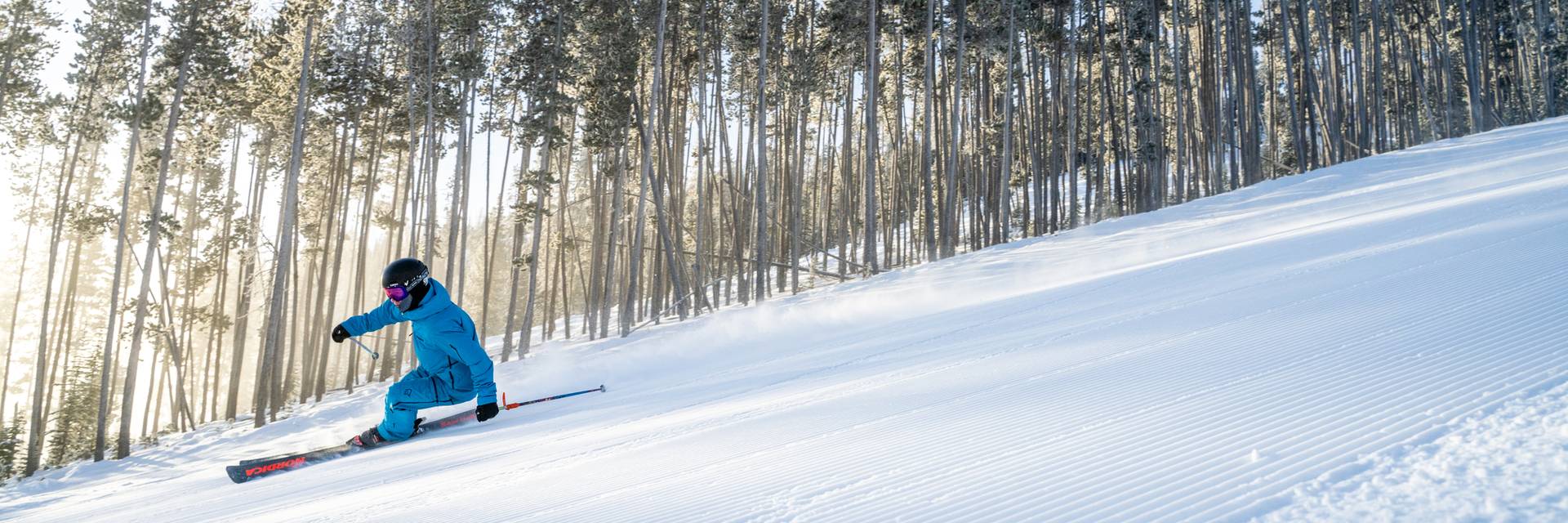
Strengthening for Ski Season
Think about snow days when you were a kid. You couldn’t wait to jump into your snow boots and sled, slide and crunch around with your friends. But first, there was the bundling up. You’d stand still while your parents layered you with coats, scarves, hats, gloves, extra socks – if they could have rolled you in bubble wrap they would have. And off you went, a little Michelin snow person in search of big adventure, echoes of “be careful out there!” drifting across the back yard.
Careful and fearful were one and the same … parents as the original buzzkills.
While researching for the book Fitness for Skiing and Snowboarding, I came across the concept of “antifragility” in Nassim Taleb’s aptly named book, Antifragile. While Taleb applies the term to resilience in business, the idea resonates on other fronts, too. He says the more we’re exposed to stress, the stronger and more resistant to it we become. I thought about how this idea could be applied to snow sports.
On the slopes, we’re continually challenged and stressed by ever-changing terrain, varied conditions, and the constant pull of gravity. It’s the good kind of stress, a first cousin to exhilaration. It’s the push and pull of these two that we feel when we’re on the top of a mountain or trailhead, waiting to take off.
Maybe you’re thinking, this guy has spent too much time at 10,000 feet. Stress can help me be a better athlete? Both can be true. It’s normal to try to avoid stress, and I’m not advocating for us to do our taxes on the chairlift up. This is about reaching the next level of proficiency and skill mastery in the sports we love.
We can increase performance and become more physically durable by systematic inoculation to stress, as well as exposure to specific, high-intensity training regimes that stress the body in ever-increasing levels. This is particularly true for snow sports – the mountain environment is the perfect laboratory to test the theories of antifragility.
Taleb also talks about what he calls “the power of subtraction within a system.” For us, this might mean a skier or rider doesn’t have to train like a long-distance runner or an Olympic powerlifter. By subtracting out all unneeded parts of a pursuit, we can distill down to movements and capacities specific to our sport.
On snow, try subtracting out the distractions, expectations, perceived limits, and past negative history. Instead, focus on what remains – your goals and the tactics and techniques needed to achieve them. To reach peak skiing and riding performance, you can prepare by blending high-intensity power output with mobility, strength, endurance, and agility.
Here are some quick tips for becoming a more antifragile skier or rider, plus access to videos demonstrating on-slope tactics and indoor exercises. If you’re looking for more in-depth training, our book spells out a multi-week program that includes dry-land exercises, sample regimens, on-snow tactics, and … encouragement.
On Snow
Skiing and snowboarding techniques start with a strong foundation
rooted in an athletic stance.
Hit the Gym
Check out our “Hit the Gym” video, which includes an alphabetical list of workout topics.
Keep in mind:
- Reps = the number of repetitions you can do while maintaining strict form (aim for between 6-15)
- When 15 reps feels easy, add weight, or progress the exercise
- Strength training is its own form of skill training. Don’t continue with a set if you have to compromise form.
- Never train to failure. Always complete the set with one or two strict repetitions in the tank.
- The Sets column refers to working sets and does not include warm-up sets.
- Follow each day’s program
Remember, certain kinds of stress can be useful. Careful and fearful are not the same thing. We do ourselves a disservice by avoiding any opportunity that could stretch us or put us on a path of personal accomplishment. Skip the bubble wrap, grab a helmet, and get out there to carpe the diems!
Chris is the author of three books: Fitness for Skiing and Snowboarding, Total Skiing, and Tactics for All Mountain Skiing. Chris started the North American Ski Training Center (NASTC) in 1994. NASTC offers clinics at Big Sky every year, and Chris is on staff at Big Sky Snowsports for certain weeks each season.








